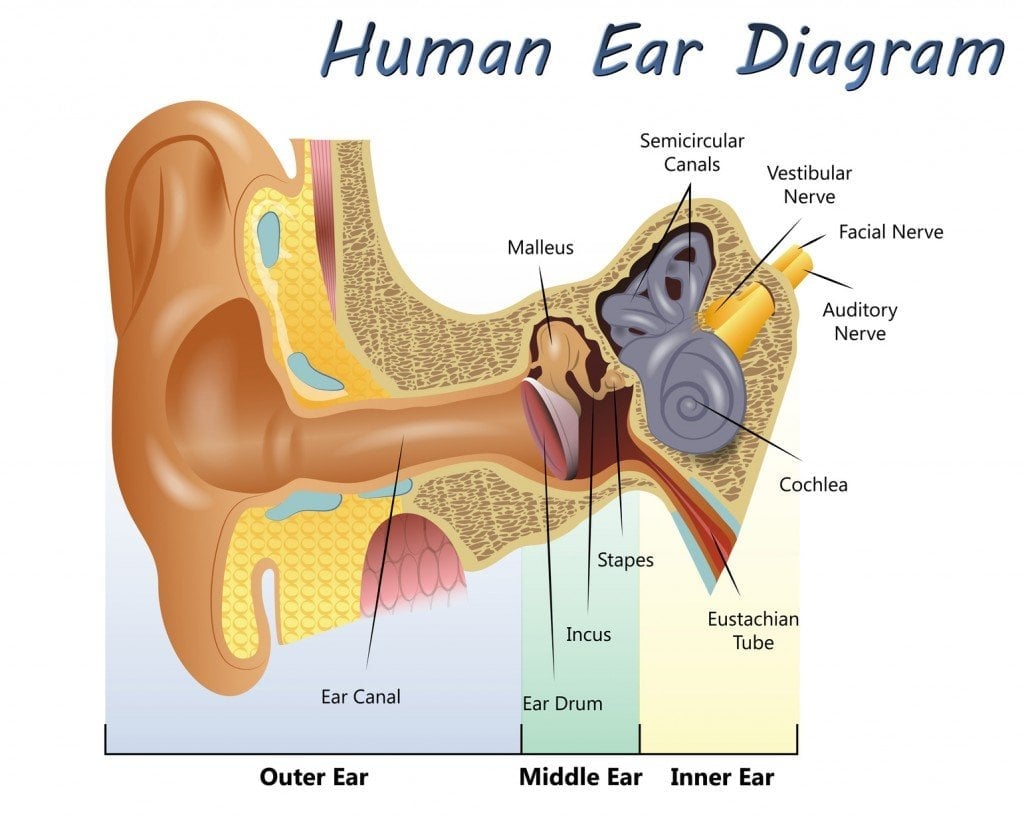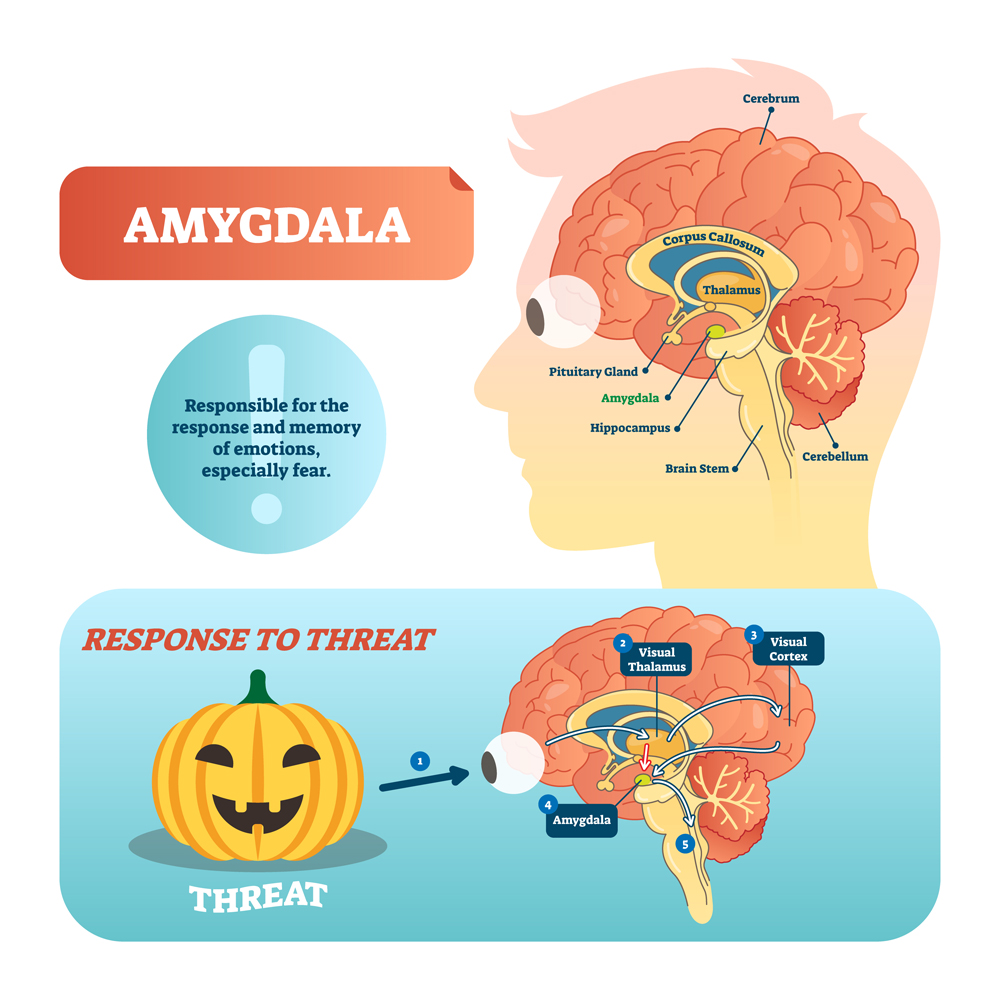The physical sensations we feel when we hear an unpleasent sound (such as nails on a blackboard) is your brain’s way of saying that danger is around and attention should be paid.
Nails clawing on a blackboard.
A fork scraping on glass.
The shrill sound of a shriek.
I bet just reading those words made some of you cringe; the very thought of them makes you grimace and sends shivers down your spine. These sounds are universally despised, but why do we have such an extremely unpleasant reaction to these sounds? Is it just because they’re annoying to listen to, or is there a deeper biological explanation behind it?

Recommended Video for you:
How Do We Hear Sound?
You might remember the iconic “water cup sound wave” scene from Jurassic Park.
In the dead of night, a young boy notices the water in a cup beginning to ripple as the ground around him vibrates, revealing the arrival of the giant T. rex as it stomps through the park. The vibration created by the footsteps of the giant predatory dinosaur causes the water in the glass to ripple.
A sound wave functions in a similar way. When we speak or make a sound, we create pressure from our vocal cords that pushes the air particles and creates a ripple in the air.

Human Ear Anatomy
The air particles vibrate in tune with the pressure produced and make their way to our ears. The outer part of our ears, known as the auricle or pinna, collects these sound waves in the form of vibrations of the air particles. The vibration travels through a small space between the outer opening of the ear and the eardrum known as the ear canal.
The eardrum, accurately named, is a stretched membrane that functions exactly like the surface of a drum. Just like how the surface of a drum vibrates when we beat it with a mallet, the vibrating air particles cause the eardrum to vibrate!
Within the eardrums and connected to it are small bones known as ear ossicles. They are a trio of 3 bones set into vibration by the eardrum, which transmits the perceived vibration to the cochlea.

The cochlea is a small, snail-like structure found in the innermost part of the ear. It has three layers filled with fluid and lined with tiny hair-like structures, known as the organ of Corti.
Now, recall how the T. rex made the glass of water vibrate with his mighty stomps? In the same manner, the vibrating cochlea causes the fluid inside it to move. The rippling fluid moves the hair cells connected to the primary nerve, the auditory nerve, which sends the vibration signals to the part of the brain responsible for understanding sounds, known as the auditory cortex.
The two defining features of a sound wave are its amplitude and frequency. Amplitude tells us how loud a sound is, while frequency lets us know how high or low a sound is, known as the pitch.
Why Can’t We Bear The Sound Of Nails Dragging On A Blackboard?
In 2012, scientists conducted a study where they asked people to rank a list of sounds according to how annoying they were. The sounds that made it to the top included knife on glass, nails on a blackboard, fork on glass, and shrill screams.
All of these sounds had one underlying similarity… their high pitch! Pitch, as mentioned earlier, is determined by frequency. The number of times a thing occurs is said to be its frequency. Similarly, the number of vibrations caused by a sound wave is its frequency. More vibrations correspond to a high-pitched sound. The unit of measurement for frequency is Hertz (Hz).
Human beings can hear sounds in the frequency range between 20 Hz and 20,000 Hz. The frequencies of the sounds listed above are between 2000 Hz and 5000 Hz. Our ears appear to be the most sensitive to this range of sound frequency.
While the people participating in the study listened to these sounds, scientists measured the real-time activity in their brains through functional magnetic resonance imaging (fMRI). fMRI shows activity in the brain by measuring the changes in blood flow in the brain. An active part of the brain uses more oxygen, which causes more blood flow to that specific area.
Scientists observed that sounds like nails clawing on a blackboard and a knife scraping on glass cause high activity in two brain regions—the auditory cortex and the amygdala. As we learned earlier, the auditory cortex is the part of the brain that helps us make sense of the sounds we hear each day.
The amygdala is a small pouch-like structure known as the “emotional center” of the brain. When we see an unsuspecting spider in our room and run out of the room at top speed, it is our amygdala at work. It triggers our fight-or-flight response, which is essential for our survival.

Why Do Such Sounds Trigger Our Survival Instincts?
Of all the sounds mentioned, screaming is the only one produced as a “normal” reaction to a situation. Human beings are evolutionarily programmed to respond to a scream as if it were a matter of life or death, because in the past, it often was! The distress calls or calls for help emitted by our primitive ancestors were similar to the sound of screams.

Any behavior that assists in the survival of a species is encouraged by evolution. A theory is that our ears evolved to amplify shrill noises like that of a scream to increase our chances of survival.
A scream, like any other sound, consists of multiple frequencies. In another study, scientists isolated the different frequencies of a shrill noise (i.e., a shriek) and asked individuals to rank them according to the discomfort they caused. Surprisingly, it wasn’t the highest notes of the scream that were the most painful to listen to, but rather the middle frequency notes.
The frequency of the sound of nails clawing on a blackboard was a perfect match with the middle frequencies of a scream. Hence, scientists speculate that the sounds of nails clawing on a blackboard or a fork scraping on a plate set off the same alarm bells in our heads as a scream, though our visual cues tell us that nothing threatening is happening around us.
This conflict between what our brain tells us and what we see causes the acute discomfort brought on by these sounds.
Conclusion
The exact reason why we can’t stand the shrill noise caused by nails clawing on a blackboard or a knife scraping on glass remains a mystery to scientists, but they have a good theory.
It might very well be due to how our ears and brains have tuned themselves over the course of thousands of years to be more alert to calls of distress, which are typically higher in pitch.
When we experience the same sound frequency produced by other non-threatening sources, it puts our mind on edge, as our primitive fight-or-flight response is triggered.
References (click to expand)
- Kumar, S., von Kriegstein, K., Friston, K., & Griffiths, T. D. (2012, October 10). Features versus Feelings: Dissociable Representations of the Acoustic Features and Valence of Aversive Sounds. Journal of Neuroscience. Society for Neuroscience.
- Halpern, D. L., Blake, R., & Hillenbrand, J. (1986, March). Psychoacoustics of a chilling sound. Perception & Psychophysics. Springer Science and Business Media LLC.
- Arnal, L. H., Flinker, A., Kleinschmidt, A., Giraud, A.-L., & Poeppel, D. (2015, August). Human Screams Occupy a Privileged Niche in the Communication Soundscape. Current Biology. Elsevier BV.
- Theunissen, F. E., & Elie, J. E. (2014, May 20). Neural processing of natural sounds. Nature Reviews Neuroscience. Springer Science and Business Media LLC.
- Sound - Neuroscience - NCBI Bookshelf. The National Center for Biotechnology Information












